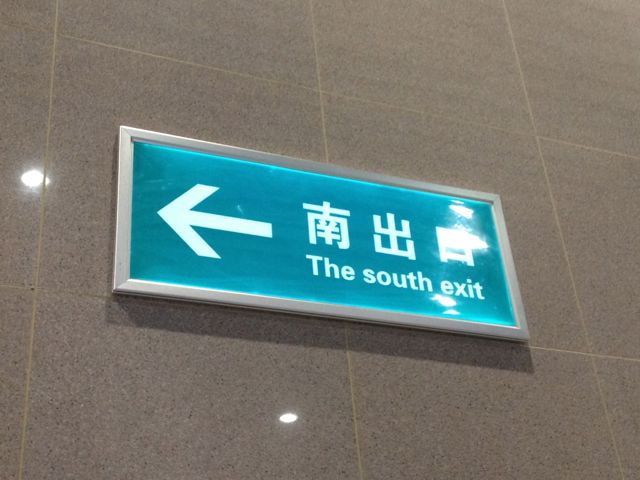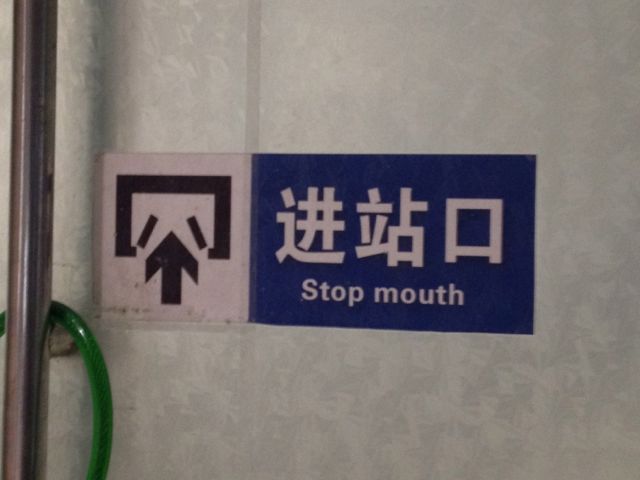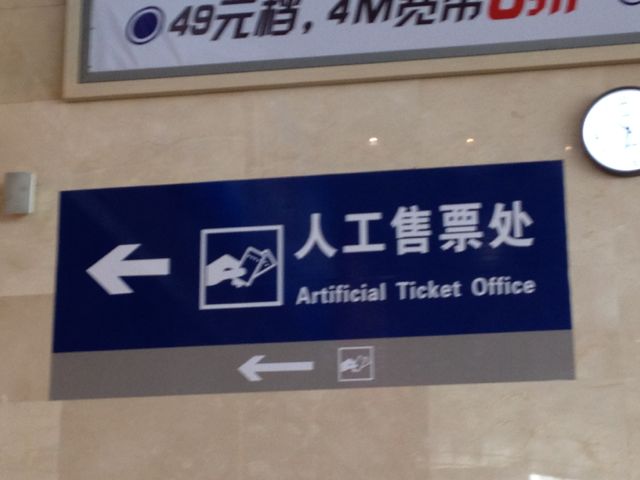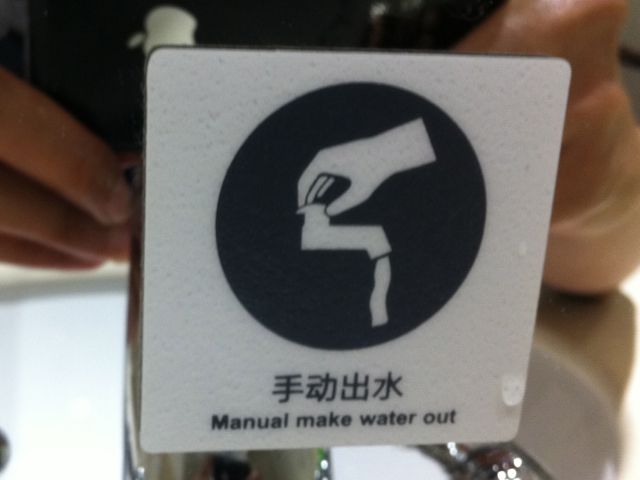All change, please!
This post has been updated and is now on a new version of this site.
This notice will remain online until 20 September 2016.
All change, please!
This post has been updated and is now on a new version of this site.
This notice will remain online until 20 September 2016.
All change, please!
This post has been updated and is now on a new version of this site.
This notice will remain online until 20 September 2016.
It’s late November. I like these late November days. First, the temps indoors are going up — we humans love places where the temps are just right — everyone should have those nice feelings of going into places where it’s nice and warm… and second, people are just calmer overall. 40+°C temperatures over summer means we will see (and have seen!) a few folks lose their calm — I took the train to Jilin once, and I saw passengers up in Second Class totally lose it as a few passengers from northeast China wrestled one another because someone was sitting in another guy’s assigned seat — or someone’s bag was probably an inch too long!
Talk about things to lose your calm over…
These past days have been filled with action on my end. I’m on the road again after one of the worst colds on record — for two weeks in late October and early November, I was out with a 40°C fever and a terrible throat that made me lose my voice for about two full days. In just four days, I completed trips to Xuzhou, Shanghai, Hangzhou and Wuxi, met station crew from Xuzhou and Wuxi, and became honorary speaker and English consultant for stations in and around Xuzhou — so if you see Chinglish there, don’t yell at the railways — yell at me instead!
The city of Beijing has been having more blue sky days as of late. In fact, if you’re armed with a car, it’s one of the best seasons to be in and around the Jing. Your best photo shots come out from days right after the cold, northernly winds “greet” the city, where you’ll get at least one or two days of blue skies without feeling like it’s Siberia (with only chillier wind giving you a hard time).
I’ve taken some good shots of the Jing in past years, but these days, my “mobile machines” are trains, not cars. I’m thinking of Zhengzhou for Friday — another round of railway Chinglish extermination, as usual. To me, the title “Honorary Speaker and English Consultant” for Xuzhou means only one thing, really:
“Doctor Chinglish Exterminator David Feng”.
All change, please!
This post has been updated and is now on a new version of this site.
This notice will remain online until 20 September 2016.
The new Street Level China post features, which are published regularly on this blog by David, offer you a view of China from street level — uncensored, unrestricted, unmodified.
Face it, the future of the rails in China lies with HSR. High speed rail landed in China beginning in 2007 with the 6th Nationwide Railway Acceleration Campaign, when trains running as fast as 250 km/h were unleashed. In 2008, even faster speed demons were set loose, to the tune of 350 km/h. The conservative rail minister Sheng Guangzu, however, rolled back speeds in mid-2011, initially finding no plausible reason, but later “backed” by the Wenzhou disaster. A speedbump is not expected any time soon, but already, these machines, rolling at 300 km/h, have transformed the way Chinese people get from A to B.
Shijiazhuang’s new railway hub features 24 platforms (nearly five times the size of the original station), an elevated concourse many times the size of the old, Maoist-era-in-appearance building, and links to the upcoming Shijiazhuang Metro. Soon, cars may disappear altogether from the parking lot in the picture, as many people transfer from HSR to Metros. Already now, many people “park and ride” from this station to Beijing, Zhengzhou, or further afield; it will take most riders just over an hour on fast services to reach these metropolises.
China’s HSR network calls for 16,000 km of express rail, although speeds have been lowered in western China. These short-sighted moves are, however, proving themselves to be failed policies, the best evidence of which can be seen in eastern China. Here, a new 350 km/h line is planned in eastern China’s province of Shandong between the cities of Ji’nan and Qingdao. At present, trains run no faster than 200 km/h on the existing accelerated line. Just think of the benefits the new 350 km/h line can bring the ridership, as well as those along the railway line.
When all is said and done, and when speeds are improved once again, Beijing will only be 8 hours away from Hong Kong, 12 hours from Ürümqi, and 24 hours from the once prohibitively-remote city of Lhasa in Tibet. China’s new revolution is less about political doctrines and more about moving people elegantly from A to B in a highly efficient manner.
That’s because I started helping my school clean test-tubes and beakers when I was about 15 over lunch — when I had nothing better to do after finishing my quick helping.
I’m not kidding you. It might seem a helluva strange reason: how do you mix cleaning lab gear with optimising English? But that’s the thing: it’s all about helping out and not “asking for attention”. (My friends in China tell me that this was the thing that was done half a decade ago. These days, if you help out, you’d be seen like an outdated follower of Lei Feng (“the mythical Chinese guy that helped everyone”) if you didn’t leave your name on the thing.)
Like: As of late, one of the trains that’s used my optimised English, train D365 from Beijing South to Fuzhou, got commended by the official People’s Railway Daily. But you never saw any public mentioning that “it was David Feng’s idea to equip the train with bilingual service cards, and that David had to work and retweak the cards, time and again, to get it right, and that David Feng paid from his own pocket to get the cards made ‘for real’, because he wanted the thing on the train ASAP”.
I seriously couldn’t care more. The thing is, I’m helping out because of Chinglish on the trains. Honestly, when you’re told — Please don’t throw the rubbish into the dustbin — you know that something’s gone wrong. Where else can you dump that banana you’ve just devoured? Obviously, the windows are sealed; it’d be suicide to crack these things open at 380 km/h*.
So with China concocting more Chinglish than they’re eradicating it — the rails included — it’s about high time I stepped in to stop the mess. Regard me as the lingo-savvy street cleaner, always photographing Chinglish and always correcting it. For one thing, I don’t like it when my railways scream out with Chinglish on their back. (If you bang into me you’ll see I’m Chinese, irregardless which ID I hold. And I don’t like it when Chinese Railways has to make do with sub-par Chinglish.)
Wuxi East is a cool station, and they’re probably a little cooler with standardised, optimised English all over the place. But nobody’d knew they translations were David Feng works — I deliberately left all traces of David Feng-ness off the thing. Ditto with Xi’an North — if you spot optimised English, that’ll just me doing my thing, sans credits. Oh and the same with Hanzhong and Ji’nan West.
I’m helping the rails get their English in order. (As an assistant professor of English at a key uni in China, it’s about time I did something for real — combining what I teach with what I love.) I’ve been to 22 countries and territories and I know when they’ve right-glish hanging over you in station signs. Obviously, since this is China’s railway system, I’m basing my optimised English on Chinese national norms, but I’m also making an effort to get the English up to speed by consulting with how English is used the right way in Hong Kong, Taiwan, Switzerland, and the UK. (Forget the US — they dumped the rails a long time ago…)
I don’t expect to get paid for this; I’m also not after free rides. (I paid for 34,000+ km of rail travel last year.) It’s a bit of Menschness (a la Guy Kawasaki). I’ll be happy when I slip into bed in the evenings knowing that Chinese Railways have one less sign in Chinglish, and one more sign in optimised English.
For one thing, I’m already happy now that passengers on HSR services to Shijiazhuang are no longer told: “Please don’t throw the rubbish into the dustbin”.
That for one thing sure keeps the rails cleaner!
* Soon. (I’m optimistic.)
As a decilingual, there are two things that can get you free smiles on the rails, and they all begin with “grati-”. One is, of course, a free ticket — a ticket for free and gratis. I got two of these, when Xi’an Rail took me over to climb the challenging Mt Qinling — transport to and from the mountains was included, so we didn’t fork out an extra cent. (Last year, though, I paid for over 34,000 km of rail rides!)
But the other “grati-“ is a little different: It’s called gratitude. The amazing Ürumqi Railways in northwestern China’s Xinjiang “knows” me on Weibo. They have included me twice (in the form of a @mention) on Weibo (Twitter for China, censors included — et-hmm…). And these guys aren’t people talking to the depths of the desert: over 270,000 follow these guys, and that’s about a fifth of the population of even one of the smallest provincial capitals in China.
Lately, these guys tweeted me on the Jiayang Railway in Sichuan, which still runs steam engines. (Link here in Baidupedia — Chinese text only.) They included only two people as @mentions: me, and the official China Railways account. (The official name of that account — the “Political Propaganda Department” of the Rail Ministry — scares a lot of people already, when you come to think of it. Not very approachable in name, to many an outsider.)
I decided that it was high time to keep giving back even more to the rails.
This was a true act of Weibo kindness. A veritable Weibo act of railway kindness. It got me excited about Xinjiang. Friends on Facebook knew about this. I’m now certain that I’m really looking forward to the chuanr.
I’m a weird animal in the rails: I’m a university professor (the way a lot of Americans, but probably not many a Briton or a German, might see me), and I’m not affiliated in any way with the rails. Mom, dad, and the wife have never worked for the rails either. But I’m one of the most faithful advocate of rail travel amongst “civilians” (outside the rail system), and I’m here to dump Chinglish at China’s rail stations.
Somehow this whole thing started back in April 2012, when the head of the Wuxi East Railway Station invited me to take a good look at the station. Wuxi East’s English was in good shape, but there were still a few cases of Chinglish. These went away when I optimised their English out of a move of pure kindness — they retweeted me when my wife and I was doing a live radio show, and friends like that really stand out.
What starts out well will continue well. I know that I’ll keep on helping the rails get their English up to speed. And if that merits another nice @mention from them, that’ll be neater still.
All change, please!
This post has been updated and is now on a new version of this site.
This notice will remain online until 20 September 2016.
There. I let my emotions loose. Never mind I’ve my mixed opinions on if we should call 北京南站 either Beijing South (correct) or Beijingnan (pinyin works). But I’ve seen a few of the sickest Chinglish at China’s train stations.
China’s trains are the best on the planet. The CRH380AL, which shuttles riders all the way between Beijing and Guangdong, is the fastest train on the world when it comes to train sets in actual commercial operation this very present day. So why should a First Class HSR system make do with Second Class Chinglish?
I’ve collected a few of the crassest mistakes. I’m now on a mission to knock out all Chinglish at China’s train stations faster than the CRH380AL speed machine. Think of this as my social duty as a teacher of English and media in universities around China (Communication University, Chinese Academy of Social Sciences (Graduate School) and soon, Hebei University, if the plans work out well).
I don’t charge the rails a single half penny for this. We’ve got to give back to society once in a while. I’ve enough in the piggy bank to keep the batteries up for a fair bit of time. In the meantime, it’s time to be a lingo Mensch, as Guy Kawasaki’d say so…





Finally, on the trains, the taps themselves come with Chinglish pre-installed…
Apart from the all-important first year party of the Beijing-Shanghai HSR entering into service, there’s also something big — in fact, two things that are big:
The former received a lot of coverage. I was, in fact, invited to a live show on Beijing Traffic Radio just to tell people that these super-cheap trains in Beijing were running their last runs. (At CNY 1.50 per full price ticket (from Beijing to Beijing East), it’s CNY 0.50 cheaper than the Beijing Subway!) The latter received just about no coverage at all.
And I’m telling ya, there’s a world of difference. What I’ve seen on Weibo recounts of a huge crowd by the Beijing East Railway Station, and tickets from Beijing to Beijing East being fully sold out. Quite on the contrary, there was no coverage of Longjiaying being bid its farewell. No TV crews, not even the random microphone from the local radio station. Nada. Tracy and I boarded Train D4532 — the last HSR service from the station — as totally normal people with no outside media coverage at all.
Most of you might be wondering now just where the heck this Longjiaying is. It’s a railway station between Qinhuangdao and Shanhaiguan stations (which also might not make sense: OK, it’s Beijing’s closest major coastline, beaches included*. It’s so reclusive, in fact, that road signs don’t make reference to this isolated stop at all. To a lot of us, Longjiaying seems to be one of the stations nobody must have any idea of. This yellow-ish station, handled by the QInghuangdao Vehicles Department of Beijing Rail, used to remain hidden to passing riders through to 15 November 2010. Before then, the only trains that’d stop here were those from dedicated railway routes carrying cargo.
This Tier 3 station suddenly became a major stop on and after that date, as Qinhuangdao station nearby underwent a massive expansion effort to accommodate HSR services to and from northeastern China (to come later this year or by spring 2013, latest). A bit further away than Qinhuangdao itself, this station is probably Station 3 of 4 in the massive Beidaihe-Shanhaiguan semi-conurbation, which is just west of the boundary with Liaoning. (Liaoning is already part of northeastern China’s three provinces.) This bit of north-northeastern China sports some very nice coastlines (plus a few crazy donkeys and camels that Tracy forced me onto… heh…)
Longjiaying is going to end service as a passenger station as today (30 June 2012) draws to an end. There are plans to, even if just provisionally, move passenger traffic back to Qinhuangdao (now redone and bigger, with the obligatory skybridge passageway). The only folks who knew this were die-hard train addicts, as well as train crew. They signalled the end of services to the station as, upon arrival, they removed, permanently, destination stickers on the trains. (The platform opposite our arrival platform already sported trains with new stickers indicating their future departure station at the nearby Qinhuangdao station.)
Apart from that, there were no signs from “society at large” that Longjiaying was finishing its final day. It’s pretty obvious, then, that the media plays a big role in this. Make the closure public via media — and you’d get a crowd. Close it covertly — and nobody’d know.
That’s how big the media is these days — even on Weibo (and microblogs in general).
* It’s also where the super-secret political meetings happen in the summers, as the “political bigs” gather in covert locations to determine just what the heck will happen to the Middle Kingdom as the temps get cooler. We know this because as our train pulled into Beidaihe, which is in this region, super-official-looking vehicles were spotted on Platform 1. Of course, there were no photos at all; the mere thought of that might land you one heck of a heavy political hiding!)